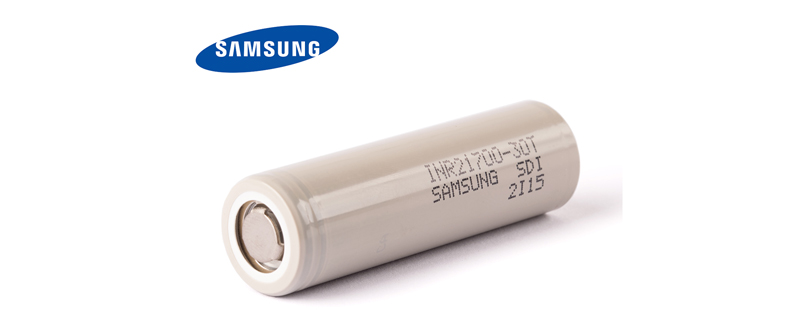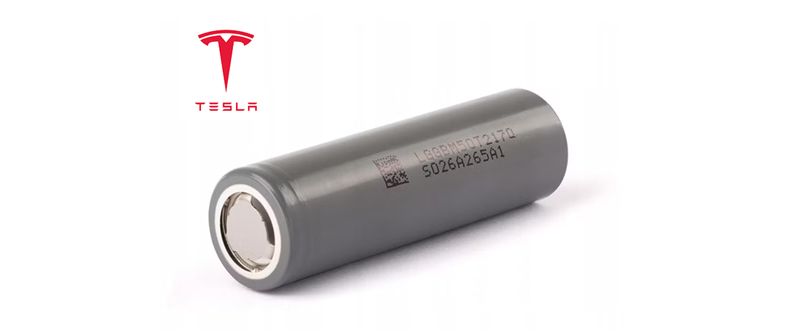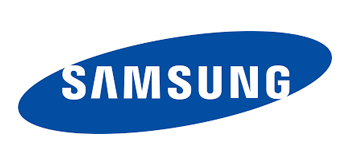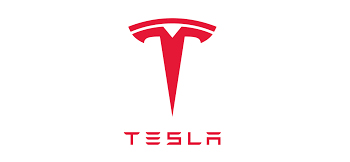Contents:
The lithium-ion 21700 battery cell is revolutionizing various industries, primarily due to its improved energy density and performance over traditional 18650 cells. Among the popular models in the 21700 battery family are the Samsung 21700 and Tesla 21700 cells. This article compares these two battery types, analyzing their specifications, performance, applications, and manufacturing processes.

Overview of Samsung 21700
Samsung has been a prominent player in the lithium-ion battery market, and its 21700 cell is no exception. The Samsung 21700 cell is known for its impressive energy density and stability, which makes it suitable for applications in electric vehicles (EVs), power tools, and energy storage systems (ESS). Samsung’s focus on high-quality manufacturing processes ensures the battery's reliability and safety, essential factors for EV and high-demand applications.
Key Specifications of Samsung 21700:
-
Capacity: The Samsung 21700 typically offers a capacity of around 5000mAh.
-
Voltage: The nominal voltage is around 3.6V, with a maximum charging voltage of 4.2V.
-
Energy Density: Samsung’s high-density 21700 cells can reach up to 260 Wh/kg.
-
Cycle Life: Samsung 21700 cells generally provide a cycle life of 500-1000 cycles, depending on usage conditions.

Overview of Tesla 21700
Tesla, in collaboration with Panasonic, has developed its proprietary 21700 cells primarily for use in its EV lineup. Tesla’s 21700 cell was introduced with the Model 3 and has become a benchmark for high-performance EV batteries. The Tesla 21700 battery is tailored specifically to maximize energy density while meeting Tesla’s rigorous efficiency and thermal management standards.
Key Specifications of Tesla 21700:
-
Capacity: Tesla’s 21700 cells have a capacity that ranges from 4800mAh to 5000mAh.
-
Voltage: Similar to Samsung, Tesla’s cells operate at a nominal voltage of 3.6V with a peak charging voltage of 4.2V.
-
Energy Density: Tesla’s optimized 21700 cells achieve around 260-275 Wh/kg.
-
Cycle Life: Tesla claims its 21700 cells can surpass 1000 cycles, partly due to their advanced thermal management in EV applications.
Performance Comparison
While both Samsung and Tesla 21700 cells have similar capacities and voltages, there are key differences in their performance attributes:
|
Attribute
|
Samsung 21700
|
Tesla 21700
|
|
Capacity
|
5000mAh
|
4800-5000mAh
|
|
Nominal Voltage
|
3.6V
|
3.6V
|
|
Max Energy Density
|
260 Wh/kg
|
260-275 Wh/kg
|
|
Cycle Life
|
500-1000 cycles
|
1000+ cycles (with cooling)
|
|
Applications
|
EVs, ESS, Power Tools
|
Primarily EVs
|
Applications and Use Cases
Samsung 21700 cells find versatility in various industries, particularly in portable electronics, electric vehicles, and energy storage systems. Due to their broad application suitability, Samsung batteries are preferred by manufacturers who need flexibility and reliability in their devices.
Tesla, on the other hand, has optimized its 21700 cell for electric vehicle applications. Tesla’s advanced thermal management system ensures the cell’s longevity and high efficiency, making it ideal for long-range electric cars. The 21700 cell plays a critical role in Tesla's goal to produce more energy-efficient and high-performance electric vehicles, as seen in the Model 3 and Model Y.
Manufacturing and Innovation
Samsung and Tesla employ different manufacturing processes and strategies to enhance their 21700 cells. Samsung relies on conventional, high-quality manufacturing practices with rigorous quality control measures, which ensures reliability in all applications. Tesla, meanwhile, focuses on automation and proprietary production techniques to maximize cell output and efficiency. Tesla’s partnership with Panasonic allows it to leverage cutting-edge technology, ensuring the 21700 cell’s compatibility with Tesla’s unique requirements.
Performance Metrics Over Time
The performance of 21700 battery cells can be represented graphically to better understand their efficiency and capacity degradation over time. This is particularly important for users and manufacturers in evaluating battery longevity and usability in real-world applications.
Capacity Retention of Samsung vs Tesla 21700 Cells Over Time
Explanation of the Chart
This chart visually conveys the performance difference between Samsung and Tesla 21700 cells, indicating that Tesla's design and management systems might provide better longevity in practical applications.
Market Dynamics and Competition
The competitive landscape between Samsung and Tesla in the 21700 battery market is characterized by rapid innovation and significant investment. As both companies strive to improve their products, the competition will likely lead to accelerated advancements in technology.
-
Collaboration vs. Competition: While Tesla collaborates closely with Panasonic, Samsung’s independent approach may lead to different innovation pathways. Each company's strategy could impact its market share and influence future developments in battery technology.
-
Global Market Expansion: As electric vehicle adoption increases globally, both Samsung and Tesla are expanding their manufacturing capabilities to meet demand. Strategic partnerships and investment in new production facilities will be key to maintaining a competitive edge.
Summary of Key Differences

Samsung

Tesla
Here’s a brief recap of the distinctive attributes of Samsung and Tesla 21700 batteries:
|
Attribute
|
Samsung 21700
|
Tesla 21700
|
|
Innovation Focus
|
Versatility across applications
|
Optimization for EV performance
|
|
Thermal Management
|
Traditional methods
|
Advanced cooling techniques
|
|
Sustainability Efforts
|
Ongoing recycling initiatives
|
Strong emphasis on recycling
|
|
Smart Features
|
Emerging technologies
|
Integrated smart battery management
|
Implications for Consumers
For consumers, the choice between Samsung and Tesla 21700 cells will depend on individual needs and applications. Those seeking a reliable battery for diverse uses might favor Samsung’s 21700 due to its versatility. In contrast, consumers focused on maximizing electric vehicle performance and longevity may opt for Tesla’s offering, given its optimized design and advanced thermal management systems.
As the battery technology landscape evolves, both companies will continue to play crucial roles in shaping the future of energy storage. By staying informed about these developments, consumers can make educated choices that align with their sustainability goals and energy needs.
Regulatory and Safety Considerations
As battery technology advances, regulatory standards and safety protocols are becoming increasingly important. Both Samsung and Tesla must adhere to rigorous guidelines to ensure the safety and reliability of their 21700 cells, especially given the high stakes associated with electric vehicles and energy storage systems.
Safety Standards
Manufacturers are required to comply with international safety standards, such as those set by the Underwriters Laboratories (UL) and the International Electrotechnical Commission (IEC). These standards dictate rigorous testing for thermal stability, electrical safety, and chemical resilience. Recent incidents involving battery failures have prompted stricter regulations, making it essential for companies to enhance their testing protocols.
.jpg)
Battery Management Systems (BMS)
An effective Battery Management System (BMS) is crucial for ensuring safety and optimizing performance. Both Samsung and Tesla integrate advanced BMS technologies into their 21700 cells. These systems monitor battery conditions in real-time, detecting anomalies such as overheating, voltage imbalances, and capacity degradation. By proactively addressing these issues, the BMS plays a pivotal role in extending battery life and preventing failures.
FAQs About Samsung and Tesla 21700 Batteries










.jpg)